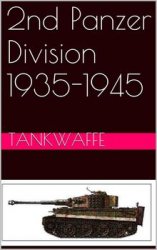ARTAC AVIATION, S. A.: c/o Infanta Maria Teresa, 9-5A, Madrid, E-28016, Spain; Phone 91-393-6447; Fax 91-393-7067; Year Founded 1994. Artac is established at Madrid in 1994 to offer regional and international passenger charters. By 1997, Operations Manager Jose Luis Olaya oversees a workforce of 17 and flights by a pair of Fairchild Metro IIs. Revenues reach $1.8 million.
Flights continue in 1998-2000.
ASA (AEROVIAS SUD AMERICANA, INC.): United States (1947-1965). ASA is established at Miami Springs, Florida, in the summer of 1947 by a group of former employees of US Airlines to carry cargo. Having acquired a Curtiss C-46 Commando, the concern inaugurates business on October 17 with a flight to Havana transporting several jeeps and spare tires for the all-terrain vehicles. A return flight is immediately performed with a cargo of flowers and Cuban cigars and tobacco. Services of this nature continue for the next five years.
In August 1952, the CAB awards ASA the first certificate for scheduled international all-cargo services between Miami and Bogota. Additional C-46s are acquired (eventually a fleet of six will be simultaneously operated) and revenue flights commence in December.
In December 1959, the CAB authorizes the carrier to serve Colombia, Ecuador, Panama, Peru, Nicaragua, Costa Rica, British Honduras, Honduras, and El Salvador. To handle this additional network, the company acquires two Douglas DC-4s in 1960, reducing the number of C-46s to three.
During the early 1960s, ASAfinds it increasingly difficult to maintain its economic viability. In 1962 it seeks a merger with Riddle Airlines. Rebuffed, the company staggers on until it suspends operations on May 10, 1965. Airlift International, as Riddle is now known, seeks to purchase a 42% interest in order to acquire the company’s certificate, but approval for this arrangement is denied by the CAB in January 1969.
ASA (ST. PETERSBURG-AMERICAN AIRLINES): Russia (1994-1995). ASA is set up at St. Petersburg in late 1994 as a joint concern sponsored by the St. Petersburg Civil Aviation Department and Russian and American shareholders. Operations commence over international routes in the CIS with an unspecified number of Antonov An-12s, Tupolev Tu-134s, and Tu-154Ms. The enterprise does not achieve viability and disappears within a year.
ASAHI AIR LINES COMPANY, LTD. (ASAHI KOKU CORPORATION): Sunshine 60 32nd Floor, No. 1-1 3-chome, Higashi-Ike-bukuro, Toshimaku, Tokyo, Japan; Phone 81 (3) 3988 9572; Fax 81
(3) 3988 9043; Http://www. owl. or. jp/aeroasahi; Year Founded 1982.
Originally formed as Aero Asahi, Ltd. on July 1, 1982, the Japanese third-level carrier is a merger of Asahi Helicopters, Ltd. (founded in 1955) and Toyo Aero Survey, Ltd. (founded in 1960). With a rotarywing fleet exceeding 50 machines of 6 types from the U. S., West Germany, France, and Russia, Aero Asahi Corporation, Ltd. plans to offer scheduled helicopter flights and shortly after its creation orders 2 Boeing-Vertal 234s, which will not be delivered. The fixed-wing fleet, inherited from Toyo Aero Survey, Ltd. consists of but 2 Rockwell Aero Commanders.
The fleet in 1983-1984 grows to include Bell 212, 214STs and 412s, plus an Aerospatiale AS-332L Super Puma and an Aerospatiale AS-355F TwinStar. The company also operates a Mil Mi-8 “Hip,” the only Russian-made helicopter flying in the West. During July of the former year, a Bell 412 is sent to the People’s Republic of China under long-term lease to the China Marine Vertical Flight Aircraft Co. to provide offshore support missions for the China Oil Development Company.
Following the August 12, 1985 crash of a Japan Air Lines Company, Ltd. (2) Boeing 747SR (520 dead), the company’s Super Puma, the only one of its type in Japan, is employed to haul aircraft wreckage down from the mountain crash site.
A shuttle service is now begun for visitors to the Tsukuba Expo ’85, held at Tsukuba Gakuen Toshi, located some 30 miles N of Tokyo. Approximately 400 passengers are flown in 32 daily services before the exposition closes on September 16.
A majority 51% stake is taken in Osaka Airways, Ltd. and its 13 helicopters on October 1. Acquisition of Osaka, which offers aerial photography and flight training and which enjoyed a ? 357-million turnover in 1984, is completed on November 27. The same day, the Ministry of Transport approves an Aero Asahi, Ltd. proposal to offer regular helicopter service between Tokyo’s Haneda and Narita Airports.
A second Super Puma is requested from Aerospatiale on April 1, 1986. Upon its receipt later in the year, it will initially be used for offshore service between Japan and Korea. If demand warrants, it may later be dedicated to passenger flights.
Following its years of service as a unit of Aero Asahi, Ltd., the fixed-wing division is renamed Asahi Air Lines Company, Ltd. in June. Scheduled fixed-wing commuter services are started from Osaka to Oita, Matsuyama, Hiroshima, and other destinations. Managing Director Kyosuke Sekimoto’s fleet is comprised of 2 Cessna 402s and 3 Pilatus-Britten-Norman BN-2A Trislanders.
Thrice-daily BN-2A roundtrips begin on July 1 between Tane-gashima and Yakushima, north of Kagoshima. No sooner has this route been started than another concern begins to serve it with a high-speed jetfoil.
Two Embraer EMB-110P Bandeirantes are ordered for the new fixed-wing enterprise in September. Rotary-wing flights continue under the Aero Asahi, Ltd. moniker; both entities will be covered here.
Asahi Air Lines Company, Ltd. takes delivery of its two Bandeirantes in early 1987.
After six years of nonscheduled helicopter charter flights, Aero Ashai, Ltd. inaugurates scheduled Bell 412 flights on April 15, linking Haneda Airport, Narita Airport, central Tokyo, Yokohama, Tsukuba, Osaka, Kobe, Kyoto, and Osaka Airports. The new “City Airlink” service is a joint venture with Japan Air Lines Company, Ltd. (2) and fulfills a promise for a shuttle service first announced by the Japanese Transport Ministry in April 1970.
During the fall, the Japan Maritime Safety Agency reports the slow sinking of the island Okinotorishima, 1,000 miles from Tokyo. A $5.8-million contract is accepted by Aero Asahi, Ltd. from the agency and 2 Super Pumas are dispatched, along with 17 government ships, to reinforce the island with iron blocks. For the year, the aerial Asahi group suffers a loss of $850,000.
Two Cessna 206s and three Beech 55s are added to the Asahi Air Lines Company, Ltd. operation in 1988. Public concern about helicopter noise forces a delay in “City Airlink” expansion during the spring; however, problems are resolved and eight-times-per-day shuttle flights between the airports with a pair of Bell 412s is begun by Aero Asahi, Ltd. on June 20. Still, bookings must be made in Japan until the company can be linked to the Japan Air Lines Company, Ltd. (2) computerized reservations system.
During the summer, typhoons and various rainstorms play havoc with the “City Airlink” schedule. Still, in early fall, 10 companies step forward to acquire $4.6 million in shareholding.
Meanwhile, interest is taken in Yokohama Air Service, Ltd. and the travel agency Asahi Sky Ace Company, Ltd. An Aerospatiale AS-332L purchased from Canadian Helicopter Corporation, Ltd. (CHC) is dispatched to Malaysia to support offshore oil drilling by Japan’s Idemitsu-Kosan Company, Ltd. The rotary-wing company enters the flight-seeing market on December 9 and, over the next month, transports 2,154 sightseers over the holiday season, along with 1,667 skiers. These events, plus the transport of 4,283 “City Airlink” passengers, help the carrier to turn the previous year’s loss into a $4.2-million profit.
In the spring of 1989, Aero Asahi, Ltd. contracts with the Japanese post office to undertake the study of a plan for the possible helicopter delivery of mail. During the same period, the company purchases 1 each Aerospatiale AS-332L Super Puma and 1 Sikorsky S-76A. The twin-engine rotary-wing fleet now includes Bell 212s, 214STs, 222s, 412s, Aerospatiale AS-355s, SA-330Js, and AS-332Ls, Kawasaki BK-117s, an MBB BO-105, the S-76, and a single Mil Mi-8, which arrived as part of the original 1982 merger. In addition, 3 Bell 47Js, 11 Aerospatiale AS-350Bs, and 37 Bell 206L/Rs are on hand, many of which are operated in support of the country’s agricultural business, including rice spraying.
During March, “City Airlink” inaugurates services to Yokohama. In the worst accident by a Japanese-owned helicopter to date, the Bell 412 on lease in China crashes while landing at Taku Heliport, Tenchine, on May 5 (10 dead). Also in May, a contract is received by Aero Ashai, Ltd. from Tokyo Electric Company, Ltd. for assistance in the construction of two major power lines, stretching over 255 miles. Late in the year, a third Bell 412 is assigned to “City Airlink,” which transports a total of 13,100 passengers on the year (average load factor 23.5%).
In 1990, 2 more Bell helicopters crash, bringing the total accidents in the past 2 years to 6, with 25 fatalities. In one of these, a LongRanger accident, Japan’s first female commercial helicopter pilot, Miss Yumi Take, is killed.
Success of the jetfoil competition forces Asahi Air Lines Company, Ltd. to cease its interisland commuter operation between Tanegashima and Yakushima on March 11.
On August 20, a Bell 206L-3 LongRanger, chartered to the Japan Broadcasting Corp., crashes into the sea near Okinawa (four dead), while on September 21, an MBB BO-105 strikes a power line near Tokyo and crashes into a mountain (three dead).
Beginning on October 28, President Terada orders a weeklong suspension of services while the Japan Civil Aviation Board (JCAB) conducts a special inspection of Aero Ashai, Ltd.’s headquarters and Tokyo heliport base; the shutdown extends through the remainder of the year. Hideki Ikeda is now named Aero Asahi, Ltd. president, succeeding Sa-dayuki Terada, with Noboru Funami as the new managing director. “City Airlink” enplanements reach 15,600.
It is arranged for Japan Air Lines Company, Ltd. (2)’s new Air Academy to take over the Asahi Air Lines Company, Ltd.’s in the West Seto region from a base at Hiroshima next April. To equip the new endeavor, JAL in November places a Y1.6-billion order for a pair of British Aerospace BAe Jetstream 31s.
When the new Makurazaki regional airport opens in Kagoshima Prefecture in December, Asahi Air Lines Company, Ltd. inaugurates scheduled services linking it with Tanegashima and Yakushima.
Flight activities resume at Aero Ashai, Ltd. in January 1991 on a limited basis, with only regular customers served. The company makes operational changes to increase safety in accordance with a report submitted to the Japanese Ministry of Transport. During the first quarter, three Bell 214Bs are sold to the Apple Valley, California operator, CRI Helicopters.
The JAL Air Academy, the flight training subsidiary of Japan Air Lines Company, Ltd (2), opens at Nishi (West) Hiroshima Airport in early March. Later in the month, JAL Air Academy is placed in charge of the Asahi Air Lines Company, Ltd. commuter operation in the Nishi-Seto region, which its parent, Japan Air Lines Company, Ltd. (2), had acquired the previous November. The service is renamed J-Air Company, Ltd., in order that the public may gain the impression that the service is operated and supported by JAL. JAL also undertakes an advertising campaign for the new operation.
J-Air Company, Ltd. services commence in April. Until the Jetstream 31s can be delivered in August, the new flights will be made with Asahi’s Bandeirantes.
In April, the Civil Aviation Bureau demands that Aero Ashai, Ltd. reduce its helicopter fleet from some 80 machines to 45 as a condition of license renewal. The Indonesian subsidiary Asahi Airways is formed during the spring. As an incentive to lure passengers to its new
Japan-U. S. routes, Japan Air Lines Company, Ltd. (2) offers 50% discount on “City Airlink” fares for its first - and business-class passengers.
Although eight-times-per-day Bell 412 services are maintained between Haneda International and Narita Airports, the intercity commuter service is suspended in April. Reportedly, it has not turned a profit since start-up and has lost $10 million, $2 million more than its start-up cost.
An appeal is now made by the Seibu Saison Group and the Civil Aviation Bureau, acting as intermediary, to JAL for fiscal assistance to Aero Asahi, Ltd. On May 22, the flag carrier replies in the negative, stating that it is unfamiliar with the commercial helicopter business and sees no gain to be made from helping the distressed operator. It also notes the economics of the J-Air, Ltd. start-up, which the major considers a form of economic rescue.
With the arrival of the Jetstream 31s in August, the Bandeirantes are returned by J-Air Company, Ltd. to Asahi Air Lines, Ltd. The new pressurized turboprops begin flying on behalf of the JAL affiliate from Hiroshima to Oita and Matsuyama.
Due to poor weather during the summer rainy season and the recent typhoon period, “City Airlink” is only able to achieve a 36.7% load factor in September. That figure declines again in October as losses, posted over the previous three years, continue to grow. At the end of the month, “City Airlink” partners Aero Ashai, Ltd. and Japan Air Lines Company, Ltd. (2) notify Japan’s Ministry of Transport that it will cease its unprofitable operations in November.
On November 20, J-Air Company, Ltd. launches Jetstream 31 services from Hiroshima to Nagasaki and from Hiroshima to Komatsu.
In 1992, Managing Director Noboru Funami replaces the Ban-deirantes in the Asahi Air Lines Company, Ltd. fleet with a pair of Cessna 206s and two Beech 58 Barons. Orders are placed by Aero Asahi, Ltd. on July 8 for 15 McDonnell Douglas MD Explorers, a new helicopter without a tail rotor currently under development in Arizona.
Fixed-wing commuter flights by Asahi Air Lines Company, Ltd. continue apace in 1993-1994 with 2 Beech 58s, 2 Beech 95 Travel-airs, 2 Cessna 402s, and 1 each Cessna 206 and Cessna 207. Meanwhile, the rotary wing fleet of Aero Asahi, Ltd. has been increased to include 4 SA 330Js, 8 AS-355Fs, 14 AS-350Bs, 3 AS-332Ls, 26 Bell 206B JetRangers, 3 Bell 20Rs, 6 Bell 312s, 3 MBB BK-117s, and 6 Sikorsky S-76s.
The largest helicopter operator in Japan, Aero Asahi, Ltd. acquires the first of 5 McDonnell Douglas MD Explorers in July 1995. The advanced rotary-wing aircraft is the first of its type to enter service in Japan. Orders are outstanding for 13 more, which will be added over the next 4 years. Its operations, together with those of Asahi Air Lines Company, Ltd., continue apace in 1996-1997.
In 1998, the rotary-wing and fixed-wing Asahi flying concerns remain core companies of one of Japan’s leading corporate groups, The Saison Group, which comprises nearly 200 companies and 4 research institutes. Capitalized at ? 740 million, offices are maintained at Hokkaido, To-hoku, Osaka (KIX), Kyusyu, and 44 other domestic locations, as well as Manila. The workforce totals 1,415.
President Tachihiko Endou of Asahi Air Lines Company, Ltd., which had sales of ? 1.6 million the previous year, now operates a fleet that includes 1 Beechjet 400 bizjet, 2 CASA C-212-100s, and 5 CASA C-212-200s.
President Toru Nakamura of Aero Ashai, Ltd., which had sales of ? 29.39 million the previous year, now operates at fleet of 5 SA-330Js, 3 AS-332Ls, 13 AS-350Bs, 8 AS-355Fs, 4 Bell 204Bs, 31 Bell 206Bs, 1 Bell 214ST, 1 Bell 230, 6 Bell 412s, 2 Fuji Bell 205Bs, 1 MBB BO-105S, 2 BK-117s, 3 MD-900s, and 4 Sikorsky S-76s.
Operations continue in 1999-2000.
ASAHI HELICOPTERS, LTD.: Japan (1955-1982). Founded at Tokyo on July 20, 1955, Asahi Helicopters, Ltd. undertakes rotary-wing passenger and cargo charters throughout the nation, along with contract services flights. Among the nonscheduled services flown are those in support of the offshore oil industry, aerial survey and photography, and agricultural spraying. Operations are conducted not only in Japan, but in China, Bangladesh, South Korea, and Indonesia as well.
By the early 1980s, the fleet comprises over 50 helicopters of 6 types from the U. S., West Germany, France, and Russia. In order to obtain the necessary permits and routes to provide scheduled service, the 750-employee company purchases Toyo Aero Survey, Ltd. and forms Aero Asahi Corporation, Ltd. on July 1, 1982.




 World History
World History









